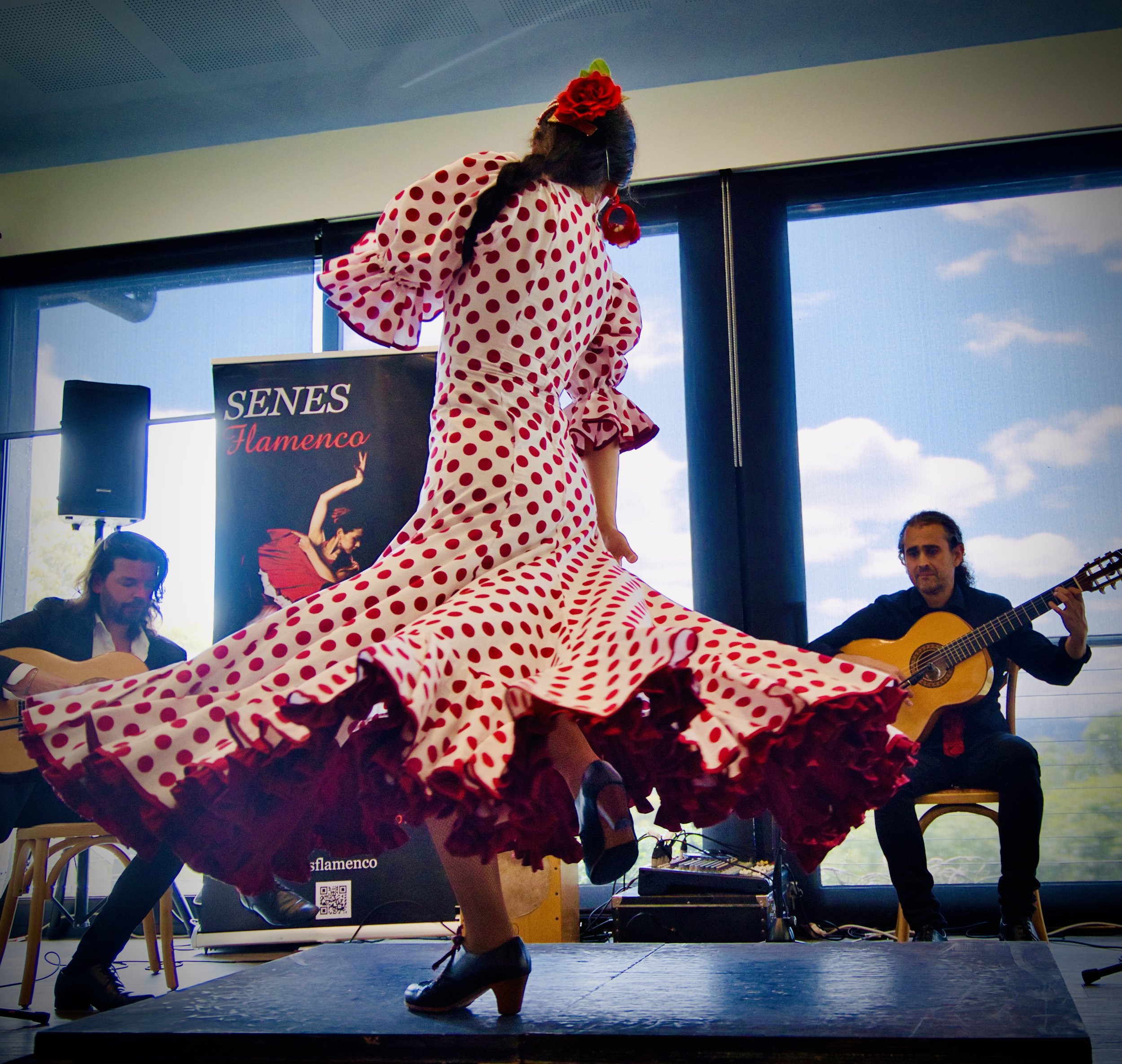Enjoy a bit of Spanish delight
We usually have at least one all-you-can Paella Feast each month where you get to witness the giant paella's being made in front of you and enjoy the authentic flavours of each paella.
So come down and check out our Paella feast and decide for yourself. It’s the best in Melbourne.
"Live Spanish Music & Flamenco Dance Show with SENES Flamenco Melbourne"
PROGRAM ITINERARY
11:45 am attendees arrival start
12:00 noon - Start serving entrees
12:15 pm start paella live cook
1:00 pm all you can eat paella ready to serve
1:00 pm – 3.30m pm - Live entertainment and flamenco show, Line Up: Trio Flamenco with Dancer and Guitarist, Percussion and Vocals
2:30 pm - Start serving dessert
2.30 pm - Finish serving paella
4:00 pm close of event
MENU
ENTRÉE
Freshly baked bread
Mediterranean anti pesto platter
(Dolmades, smoked salmon, Salami, Prosciutto, olives, caperberries, crumbed fried prawns)
MAIN PAELLA DISHES
Live cooking station
Seafood Paella- Prawns, Calamari, Mussels, Fish, roasted Capsicum, Peppers, Garlic, Tomato, Onion, Saffron & Paprika
Cumin and red wine braised beef cheek
Mojo marinade lamb ribs
Chicken and Chorizo Cazuella, with Saffron rice
Vegetarian Paella with seasonal vegetables
DESSERT
Churros with chocolate fudge
Usual restaurant Menu will be unavailable on the day.
Children Under 12 – Kids Menu. View here
PAELLA FEAST GIFT CARDS
Please note you can now purchase Paella gift vouchers. Click here and scroll to the bottom ‘Experience Cards’ and select the Paella Feast gift card.
Note: Paella Feast gift cards are only valid on Paella Feast days.
ETYMOLOGY
pa·el·la [pah-ey-luh, -eyl-yuh, pah-yel-uh] –noun a Spanish dish prepared by simmering together chicken, seafood, rice, vegetables, and saffron and other seasonings.
There are tales that the word originated from the Arab word “baqiyah” meaning left-overs. However, linguists believe the word came from the Latin word “patella” [puh-tel-uh] (Origin 1665–75; Latin, diminutive of patina, patena pan) literally meaning, something wide open.
HISTORY OF PAELLA
Valencia on the Mediterranean coast of Spain is where paella initially developed. The Arabian Moors had introduced rice into this region of Spain during their occupation. In the fields of Valencia the workers cooked the delicious rice dish in a “paella” pan over an open file and ate it directly from the pan with wooden spoons. As a peasant food whatever ingredients were cheap and locally available were used in the paella. Typically early field paella included snails, marsh rats, eels and butter beans. More wealthy Valencians cooked paella using rabbit, chicken, duck, beans, artichokes, tomatoes, rosemary, paprika and saffron - yum.
The popularity of Paella spread throughout Spain and many different types developed particularly the popular seafood paellas. Communal Paella cooking and village paella competitions became popular in many regions of Spain. Most families in Valencia have a traditional secret family recipe.
Today Paella is regarded by the world as Spain’s national dish but to the Spanish it is just a regional food from the Valencia region.
CALASPARRA RICE
The best traditional paella is made using special short grain rice grown in the Calasparra region of Spain. Calasparra is a small area of the region of Murcia on the Mediterranean coast of Spain. It is between Andalusia and Valencia and was occupied for many hundreds of years by the Moors from Arabia. Although Murcia is generally a hot dry region the Moors introduced irrigation and in the small cool area known as Calasparra where 4 large rivers join together this special paella rice is grown.
In the cool wet climate created by the confluence of the rivers the ancient rice strains mature very slowly and produce a “round” grain that can absorb 30% more liquid than the ordinary rice varieties. This is particularly important as it allows more flavour from the paella stock to transfer to the consumer of the dish. Not only does the rice absorb more flavour it remains separate and does not stick together like other rice varieties.



